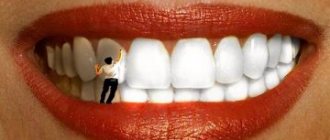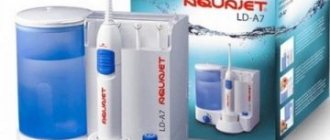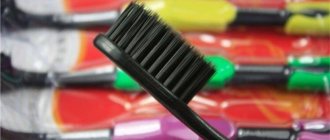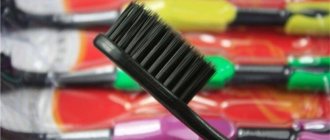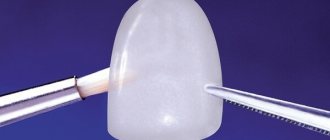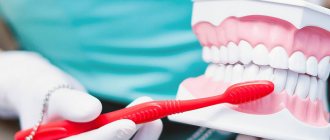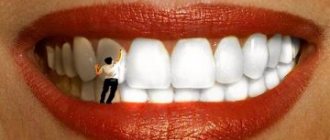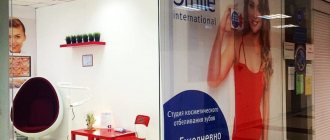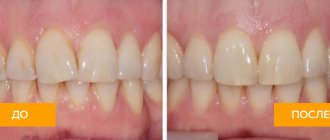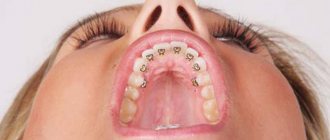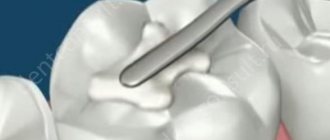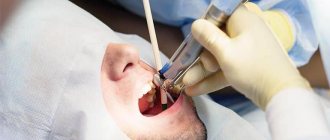Bite defects, both in adults and children, develop gradually, with varying degrees of intensity. This is determined by a number of provoking factors, some of which are due to external negative influences, and the other part is of a genetic nature.
In the arsenal of modern medicine there are many ways to solve dental problems, including malocclusions. The choice of therapeutic treatment method is the prerogative of a specialized specialist.
Only an orthodontist, after an objective assessment of the clinical picture of the condition of the oral cavity, can determine the most optimal design option for eliminating the defect.
Indications for use
The following indications are defined for the use of the T4A system:
- anterior crowding of the teeth of the lower jaw row;
- bite pathologies within the framework of the Angle classifier;
- anterior type abnormal bite;
- overbite;
- irregular structure of the lower dentition;
- due to medical reasons, it is impossible to use braces of any kind;
- as a preventative measure after using braces and consolidating the positive dynamics obtained during treatment;
- pronunciation defects;
- bruxism;
- strong torsion of individual fragments of the jaw row;
- violation of swallowing functions;
- the need to correct anatomical deviations in the structure of the jaw apparatus;
- to eliminate bad habits in children and adolescents - biting the nail plate, keeping pencils and other foreign objects in the mouth;
- crossbite, which occurs when the jaws do not close together.
Who is it suitable for?
The main indications for using trainers are:
- alignment of incorrect position of crowns in the anterior dentition;
- expansion of the jaw arch using additional orthodontic devices;
- enhancing the therapeutic effect when wearing braces;
- securing the correction after removing braces;
- elimination of relapses after using classical orthodontic systems;
- the presence of myofunctional bad habits (improper swallowing, mouth breathing, interdental position of the tongue);
- class II disocclusion with moderate deep overlap of incisors;
- crowding of the front row of teeth in the lower jaw;
- open or distal bite of the anterior region;
- hypertonicity of the muscles of the face and jaw.
Contraindications for correcting orthodontic problems using trainers are:
- the presence of psychoneurological pathologies;
- inability to breathe through the nose;
- cross bite of the lateral segment of the dentition.
The most optimal age for correction using T4A modification trainers is considered to be children from 10 to 15 years old. But as practice has shown, they are no less effective in correcting simple pathologies in older patients.
Design and characteristics
In terms of external design and design specifics, the devices are strikingly different from conventional orthodontic models. The device contains the following components:
- labial protrusion - intended for forceful fusion onto the anterior organs;
- guide channels - they are assigned the role of dental function. Made in an arched shape, they stimulate the processes of alignment of the crown part of the teeth;
- training tongue - it can be seen from above the dental canal, its task is to form the most correct position of the tongue and prevent it from falling out;
- language limiter - has a positive effect on the quality of respiratory processes in the nasopharynx;
- lip bumper and sides - thanks to their presence, the product is securely held in the oral cavity during night sleep;
- arcuate threshold – effectively eliminates muscle tension and spasm. Activates the work of the oral muscles. Located in the center of the device;
- distal ends - the second molars are placed under them;
- wing-shaped at the base of the model - it is intended to strengthen the jaw and temporal joints, as well as slightly correct the position of the moving part of the jaw.
Why do you need to wear retainers after braces? We will talk about this in our next article. And here you can see a photo of plates for straightening teeth.
In addition to design features, the devices are also characterized by the type of correction performed - for this purpose, a special system has been developed that involves the use of models of two options.
Blue (initial)
Effective in the initial treatment process. The soft silicone tray applies light, gentle pressure to the coronal area.
The increased elasticity and flexibility of the component allows the product to be worn together with expansion structures of the jaw arches. With this combination, a lasting result is achieved just a few months after the start of the course of therapy.
Red (final)
The red trainer performs the finishing function. Externally, it is absolutely identical to the previous one - the main difference is the color scheme and denser, harder material. It increases the pressure on the organs compared to the blue product, giving a slightly greater load.
While the patient uses the red trainer, the jaws develop the correct formation relative to each other, the teeth are aligned, and the habit of correct bite is formed.
How to wear?
It is recommended to wear the T4a trainer for 1-4 hours during the day plus throughout the night. While wearing this device, your lips should be kept closed, do not strain them when swallowing, and breathing should be through your nose. At first, during night sleep, you may involuntarily remove the device from your mouth. To quickly get used to it, you can increase the time you wear it during the day.
Also, at the second, final stage of therapy, when a more rigid T4a trainer is used, it is first allowed to wear it during the day for the same 1-4 hours, and to wear a soft blue T4a trainer at night.
Operating principle
The principle of operation of the T4A system is the constant force pressure of the labial arch on the teeth. The organ canals are designed in such a way that the force of influence on their lingual surface is minimal.
This is how the jaw gradually expands to the desired size. The muscle tone of the lower dentition decreases somewhat and the bite is leveled.
To ensure that the impact force is maintained at the required level, the two trainer options described above are used in combination. At the same time, the transition from blue to red should take place in stages. At first, the design is worn only during the day, then worn around the clock.
Reviews
Dental straightening with the help of trainers is becoming increasingly popular. Generally, patients are satisfied with the results obtained.
The most common drawback is severe pain during the adjustment period. We invite you to leave your feedback on this topic in the comments to this article.
In this video, the patient demonstrated what the product looks like:
If you find an error, please select a piece of text and press Ctrl+Enter.
Tags: bite correction t4a trainer
Did you like the article? stay tuned
Advantages and disadvantages
Unlike plates and braces, to eliminate anomalies in the structure of teeth, the T4A trainer has a number of qualitative advantages in comparison with them:
- the main treatment process is carried out at the time of sleep;
- if necessary, the time period of daily operation of the structure can be minimized by prior agreement with a specialist;
- the device quickly adapts to the anatomical structure of the oral cavity, does not require long-term adaptation and does not irritate the mucous membrane;
- easy to use and maintain;
- costs an order of magnitude cheaper than plates and bracket systems.
We will be told about several more advantages of using trainers in the following video:
The disadvantages include:
- inability to communicate verbally while the mouth guard is worn;
- the outcome of treatment depends on the patient’s internal discipline and patience;
- in complex, severe forms of anomalies, the effectiveness may be insufficient.
Price
T4A trainers are an alternative technique to braces, not only in terms of their impact, but also in terms of cost. Compared to braces, treatment with trainers costs almost nothing.
The average price of one device from a European manufacturer is 3,500 rubles . The entire treatment process will cost 7,000 rubles .
If you don’t have this amount, you can purchase cheaper options from a Chinese or Korean manufacturer. The price of one device in this case will be about 2000 rubles .
Wearing instructions
The T4A trainer is a removable product that requires independent installation. This should be done correctly, otherwise the effect of use will be insignificant:
- turn the model so that the “tongue” looks up;
- Without changing the position, bring the product to the oral cavity and attach it to the teeth so that the arches fit perfectly on the jaw row;
- fix the training analogue of the model with the tip of your tongue;
- Gently squeeze both jaws without straining or putting pressure on them. If everything is done correctly, a person will feel some impact of the arches on the dentition;
- close your lips and inhale several times. If nasal breathing is not associated with discomfort and no interference occurs, then the device is fixed correctly.
You also need to use the product correctly:
- while it is present in the oral cavity, there is no need to talk - this can not only damage the device, but also cause injury to the mucous membrane;
- do not try to chew the body of the structure, as this will nullify all previously achieved results.
In order for the treatment procedure to be high-quality and beneficial, you must strictly follow the doctor’s temporary recommendations for wearing the product.
The time is selected individually, taking into account the specifics of the pathology. Most often, the doctor allows partial use of the trainer during the daytime.
What are trainers
Orthodontic trainers are devices designed to correct anomalies in the development of the dental system and eliminate the causes that caused them. In simple words, these are simulators for developing the functional position of the facial muscles. These muscles, like a corset, keep the maxillofacial skeletal system in proper condition. Thus, trainers not only align the position of teeth, but also eliminate the source of deformation.
Externally, the devices are a splint (mouthguard) for two jaws with grooves for teeth on the inner surface. The double-jaw design immediately affects all muscle groups of the face. They are made from polymer of varying hardness and a high degree of elasticity. This material is hypoallergenic, therefore it does not cause negative reactions in the body and is safe for the health of the child. Trainers for children are made of colored polymer.
Care instructions
It is necessary to care for the product carefully and regularly:
- daily, after each removal from the mouth, rinse the device well with running water;
- Clean the device every 3-4 days with a regular toothbrush and non-abrasive toothpaste;
- do not expose the system to excessively hot temperatures and do not boil it under any circumstances;
- during the period when the device is not in use, provide it with high-quality storage - purchase a special container, keep it away from small children and pets;
- If defects and visible damage to the silicone surface are detected, the trainer should be shown to a specialist who will decide on its possible replacement.
Orthodontic treatment methods are the treatment of anomalies in the development of the dental system using special orthodontic devices. At the same time, some irregularities in the shape of the face are eliminated, the acts of chewing, breathing and speech are normalized, irregularities in the location of the teeth, the shape and relationship of the dentition are corrected. Now there are many different orthodontic appliances. One of the most popular nowadays are orthodontic trainers.
Today we’ll talk about orthodontic trainers for teeth, their types, indications for use and much more.
1. What are trainers?
2. Indications.
3. Contraindications.
4. The difference between trainers and other orthodontic devices.
5. Types and models of trainers (orthodontic trays)
6. Proper care.
What are orthodontic trainers ?
Photo of the trainer.
Trainers are removable silicone or polyurethane orthodontic devices (mouth guards, splints) that are designed to correct anatomical bite defects. They can be considered an alternative to brace systems, which should solve the same problems. The main difference from other designs that are used in orthodontics, in addition to their appearance, is that the trainer is designed to eliminate the causes of defects.
Trainers help straighten teeth and eliminate excessive pressure on the maxillofacial muscles or bad habits (tongue sucking, finger sucking) that lead to abnormal bite formation.
An important difference between a trainer and braces or orthodontic plates, which have a mechanical effect on the teeth, is that the splints eliminate the cause of the development of the anomaly, and not its symptoms. In addition, the unique shape of the trainer, made of elastic silicone, gently relieves excessive muscle pressure on the jaws and teeth, making it possible to consolidate the achieved results and eliminate the possibility of relapses.
The purpose of wearing orthodontic trainers is also to bring the tongue into the correct position and form nasal breathing.
Such structures are made from polyurethane of varying hardness, which has the properties of an elastomer. An elastomeric material is one that has very high elasticity. The polymers used are safe as they do not cause allergies.
Main indications for using the trainer: Let's consider anomalies in the development of the dentofacial system, which are indications for wearing the device:
- The inability of a person to use braces for one reason or another;
- malocclusion - deep and open;
- in the frontal part of the lower jaw there is pronounced crowding of teeth;
- some speech therapy problems;
- improper swallowing;
- consolidation of the results of orthodontic treatment;
- rotation of canines and incisors;
- bad habits, such as: sucking the thumb and other objects, inserting the tongue between the lower and upper teeth;
- dental trainers are made from hypoallergenic materials and therefore can be used even by patients prone to allergic reactions;
- psychological problems;
- nasal congestion.
- pain and excessive stress on the TMJ.
Contraindications:
The main disadvantage of trainers is the fact that they may not be effective in all cases. Contraindications for use are: severe nasal congestion, complex cases of malocclusion or dentition. In this state of affairs, it is impossible to correct the anomaly without mechanical action.
The difference between trainers and other orthodontic devices.
The main difference between trainers and other orthodontic devices is their practicality. Unlike braces, they do not need to be worn constantly. They are worn at night and for a couple of hours during the day.
It is also worth noting other advantages:
- easy installation
- the elasticity of the structure does not injure the oral cavity
- convenience and use of the device at night
- invisibility of the device
- minimal discomfort
- easy to care for
- acceptable price
But it is worth noting the minimal number of disadvantages in using these devices:
- it is not possible to talk when the device is installed,
- The final result directly depends on the patient, on his responsibility in regular use of the device,
- low effectiveness for complex anomalies.
How to wear dental trainers?
The device is placed in the oral cavity, the tip of the tongue should be located in the “tongue” of the trainer. Then you need to close your teeth and lips and breathe through your nose.
Types and models of trainers.
There are different classifications of dental trainers, depending on the functionality and purpose of the devices.
According to their functional purpose, trainers are divided into:
- initial ones are soft devices with good elasticity, which allows the patient to quickly adapt. The average lifespan of initial trainers is about 6-8 months, most often they are blue in color.
- the final ones are orthodontic aligners, repeating the shape of the initial ones, but made of less flexible materials. The duration of use of final trainers, as a rule, is also limited to 6-8 months, after which most causes of malocclusion are usually eliminated, usually made of pink silicone or polyurethane.
- retainers - these devices are designed to consolidate the results of orthodontic treatment and prevent relapses.
Trainer models are also classified according to their intended purpose.
The following types of dental trainers are distinguished:
1. trainers for babies TRAINER T4I INFANT
During the formation of the dental system in children, various pathologies often arise. This may be a malocclusion, incorrect position of the lower jaw, crowded teeth, etc. Trainers are a good way to correct such defects in the early stages, as well as to prevent them . These are special silicone splints placed in the oral cavity, which help eliminate the main causes that give rise to these pathologies. Special trainers are produced for children (t4ki INFANT soft (blue) and t4ki INFANT soft (pink) ) from two to five years. They dress for 10 – 15 minutes twice a day. These simulators replenish the load on the oral muscles, help develop the correct position of the tongue when swallowing and at rest, and also eliminate interdental sigmatism. The range of trainers for children from five years of age is designed to consistently eliminate the most common dental development disorders and consolidate the achieved results. They are worn during sleep and for 1 – 2 hours during the day. Trainers for babies are completely safe. They are made of hypoallergenic materials, wearing them is absolutely painless and usually does not cause psychological rejection. They are contraindicated only in case of particularly severe defects of the dental system.
T4K PRE-ORTHODONTIC TRAINERS
Pre-orthodontic trainers T4K blue and T4K pink (red) are widely used by orthodontists to solve the problem of malocclusion from childhood (5-10 years), speech defects and atypical position of the lower jaw.
3. TRAINERS FOR LEVELING T4A
Disturbances in the structure of the dentition are currently one of the most common pathologies of the dental system. Incorrect bite is not only not aesthetically pleasing, but also causes other dental diseases (wearing off enamel, gum disease, difficulties with oral hygiene, impossibility of dentures, etc.)
Currently, special trainers are produced for leveling T4A blue (blue) and T4A pink (red) . These are elastic splints made of silicone that are placed in the oral cavity during sleep and for a short time during the day.
4. TRAINERS WITH MYOBRACE
New orthodontic devices of the Myobrace series with a two-layer design combine the advantages of soft flexible silicone, which forms the outer layer, and a hard inner layer, which forms an elastic frame that stimulates the growth and expansion of the patient’s dental arch. These devices can also be recommended for use during the period of retention when correcting crowding of teeth in the anterior region.
Myobrace series devices are available in 7 sizes:
- Myobrace trainer, size MB1 - distance of the first 4 incisors - 30mm
- Trainer Myobrace, size MB2 - distance of the first 4 incisors - 31.5 mm
- Myobrace trainer, size MB3 - distance of the first 4 incisors - 32.5mm
- Trainer Myobrace, size MB4 - distance of the first 4 incisors - 33.5mm
- Myobrace trainer, size MB5 - distance of the first 4 incisors - 35 mm
- Trainer Myobrace, size MB6 - distance of the first 4 incisors - 36.5 mm
- Myobrace trainer, size MB7 - distance of the first 4 incisors - 38.0 mm.
5. TRAINERS FOR CORRECTION (SERIES I-3; I-3N; I-2; I-2N)
Trainers for dental correction are usually prescribed to children aged 5 years and older, when malocclusions are in their initial stages. The treatment takes place in two stages. At the first stage, soft trainers are prescribed, to which even a small child quickly and easily adapts. The second uses more rigid models designed to consolidate the achieved result. Typically, the mode of wearing trainers is as follows. They are worn at night and for one hour during the day. The initial (soft) trainer is worn for six months, and the final (hard) trainer is worn for six months to a year. The regimen is prescribed by the dentist strictly individually depending on the patient’s characteristics. In cases of bruxism (involuntary grinding of teeth during sleep) or mild disocclusions, they immediately begin with a hard trainer.
LINGUA BRACES T4CII; Т4В
The braces trainer is a modern and reliable device that allows you to solve many of your child’s dental problems. If you want him to grow up healthy and happy, you should pay special attention to his teeth from early childhood. A dental trainer is a great way to quickly and painlessly correct orthodontic problems and give your child a carefree childhood.
The development of malocclusion can be caused by various factors. This can be either bad habits or muscle dysfunction. Therefore, very often after wearing braces, problems return again. As a rule, dental problems begin in children during the active change of milk teeth to molars or later.
Trainers for braces. They serve as an addition to the main treatment of occlusion with braces, and also protect gum tissue from damage by elements of braces; joint trainers. Designed to relieve tension and pain in the jaw muscles.
7. TRAINERS FOR BRUXOGARD BRUXOGARD
The bruxism trainer was designed specifically for children 2-5 years old. It is very easy to use and helps eliminate bad childhood habits such as thumb sucking, interdental tongue thrusting and mouth breathing, and also stimulates the tone of the orbicularis oris muscle and allows children to perform chewing movements to train muscles and stimulate jaw growth - such movements have a cleansing effect. impact on teeth. The trainer cannot be swallowed and can easily be placed in children's mouths; however, the child must be supervised by an adult while using the trainer.
8. TRAINERS TO PREVENT SNORING TMJ-MBV
The new tmj.mbv device features large ventilation holes and a base with air shock absorbers enlarged to 7 mm, allowing lateral and AP movements of the lower jaw during sleep, as well as mild decompression in the TMJ area. Most anti-snoring therapy devices rigidly fix the lower jaw in an anterior position, which can cause damage to the TMJ. The TMJ-MBV splint allows movement of the lower jaw, which is preferable if the patient has TMJ dysfunction.
The sides of this device are much higher than those of a conventional joint splint, which makes its use more comfortable - it does not fall out of the patient’s mouth during sleep. TMJ.MBV allows the patient's lower jaw to be pushed forward, while the height of the bite increases due to the thickness of the base, which helps to increase the lumen of the oropharynx. The device is made of flexible silicone, which allows free movement of the lower jaw during use, making it ideal for TMJ dysfunction.
TMJ AND TMD JOINT SPRINTS
The joint splint has a thickening in the area of the molars, which promotes mild decompression of the joint. Thanks to the flexible silicone base of the splint, a relaxing effect is created on the muscles in the area of the TMJ joint, head and neck, which leads to an immediate reduction in pain. Habits such as bruxism and clenching teeth under stress are limited - tension is relieved thanks to the patented wing-shaped base, as well as the double-jaw design of the splint: in the splint, the lower jaw moves forward. the relative position of the jaws is set according to class I. Over time, this helps eliminate chronic pain in the joint area. The main symptoms of TMJ dysfunction are eliminated within a few days, but to relieve chronic pain, wearing the device for several weeks is required. The joint splint should usually be worn for 1 hour during the day plus overnight. The duration and mode of wearing are individual and should be determined by the attending physician according to indications.
It is not difficult to distinguish the listed types of trainers , since they are indicated by certain markings. For example, dental trainers for adults are T4A, trainers for braces are T4B, trainers for children are T4K and T4Ki. And although such devices are available for free sale, you should not purchase trainers on your own, without a doctor’s recommendation. The fact is that dental trainers should be used as part of an orthodontist-planned treatment that takes into account the patient's specific malocclusions. Only then can you count on getting an effective result.
A diary of daily work with the trainer will be an excellent addition to improve the results of treatment, as well as constant monitoring of wearing trainers
The diary contains additional information on the rules of training trainers. You can also find many useful exercises for the development of the myofunctional system.
The description in the diary is written in a language accessible to children and all exercises are presented in the form of a game.
This diary will help you and your child on the path to achieving better treatment results.
Trainer care
Dental devices are quite easy to care for:
- It is recommended to store the trainer in a special plastic container.
- You should clean it periodically with toothpaste and a brush.
- Inspect for mechanical damage. If they are detected, you should consult your doctor.
- Trainers must be worn very carefully: you cannot chew, bite, or try to move them in your mouth. You cannot talk while wearing the device.
- After each use, rinse the tire under running water.
- Do not boil it or wash it with very cold or hot water!
Let's summarize.
Dental trainers are designed to correct various types of malocclusion; they are also good at weaning, especially children, from bad habits that can provoke the appearance of abnormalities in the development of the temporomandibular joint.
They are suitable for the final stage of forming an anatomically correct bite after treatment with braces.
Also, in some cases, they are effectively used to combat snoring and some speech defects caused by the pathological placement of the lower jaw in the oral cavity.
With the help of trainers, incorrect position of the front teeth, such as twisting, is corrected. Most trainers are designed to relieve excess pressure from the jaws and muscles on the joint apparatus of the oral cavity.
These devices are very convenient to use. They are easy to keep clean and do not cause physical discomfort during use.
Thanks to strong, and at the same time quite elastic materials, they are difficult to deform and render unusable.
Modern dentistry also distinguishes children's trainers from adults in their functionality. They solve various problems based on the age characteristics of the patient.
These orthodontic structures are not effective in correcting serious disorders of the dentofacial apparatus. These are fairly narrowly targeted therapeutic devices. But they do a good job of solving the problems they were originally designed for.
Duration of treatment
The duration of treatment is determined by the nature of the disease and the degree of neglect of the pathology . If we are talking about correcting myofunctional habits, the approximate course of treatment is 4-6 months. If the problem is severe crowding of organs, or abnormal growth of the coronal part, the result can be achieved within a couple of months.
It happens that during the correction process the positive dynamics are suspended - in this case, the doctor will prescribe a device made of harder silicone and the treatment will continue for several more months.
On average, the full course of treatment is 6–9 months. To minimize wearing time, it is advisable not only to sleep with the device, but also to use it during the daytime - at least for several hours. As the use of the device progresses, the time of daytime therapy can be gradually reduced - from 3–4 hours to 1–1.5 hours per day.
You can see photos and find out the price of lingual braces on the next page. This information: https://dentist-pro.ru/ortodontiya/prikus/posledstviya-nepravilnogo.html will help you understand the possible consequences of malocclusion.
And here we will answer the question: is it possible to straighten teeth without braces?
Types of models
For the T4k orthodontic trainer to work, two stages of treatment are required, during which the aligners are changed.
At the first stage, the baby needs a trainer made in blue. This
construction made of softer material. Due to this, the trainer can easily “adapt” to a specific anomaly (malocclusion or dentition development) and, acting on it, gradually eliminates the problem.
At the second stage of treatment, a more rigid tray of a pink (red) shade is required. It is intended to consolidate the obtained result. Duration of use – from 3 to 6 months.
Before purchasing a t4k trainer, installing it or replacing it with a new one, you need to consult an orthodontist.
And remember that the treatment must be consistent or continuous, otherwise all the work after a few weeks will be in vain and you will have to start over.
